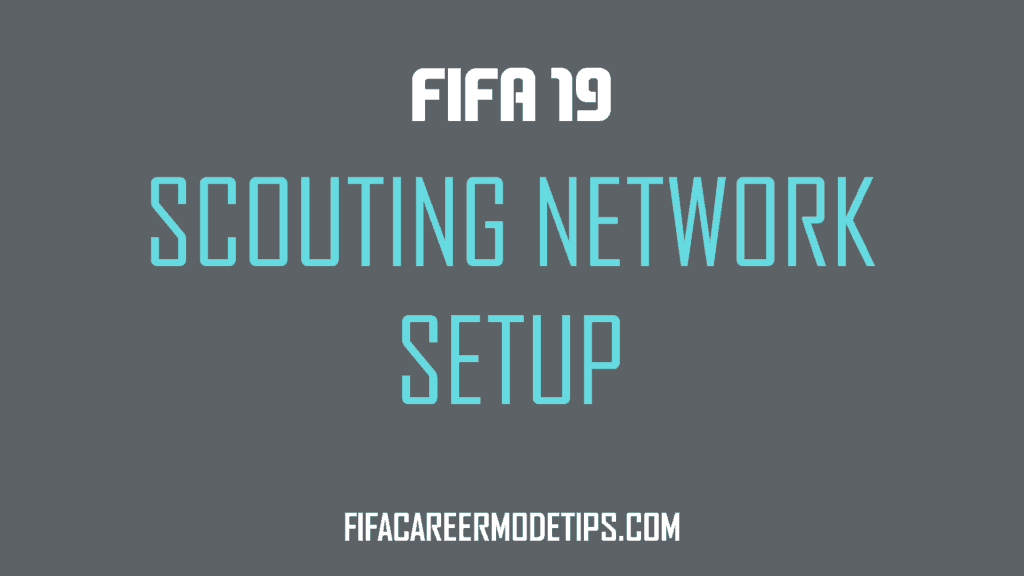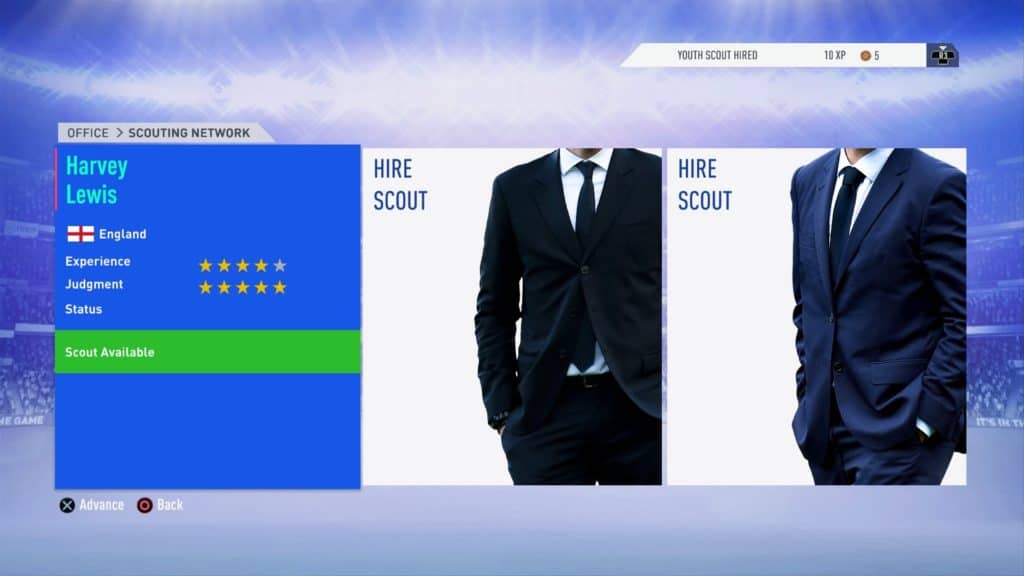
Hired yourself a scout (or three)? Good, let’s get you acquainted with the best way to get your scouting network setup. As always, I’ve compiled the really important parts in a handy TL;DR at the bottom of the page.

Which are the Best Countries to Scout?
First things first, where do you want to dispatch your scout to? You’ll be presented with a choice of 54 countries from different regions. The first question to ask is are some countries better than others for scouting youth players? The answer to that is yes. So let’s dig in to how they differ. In a similar way to how scout have percentage chances of finding high quality players, countries are the same. Here’s a breakdown of how they compare in the likelihood of finding ‘platinum’ players, ranked best to worst.
- Argentina and Brazil – 15%
- Italy, Spain and Portugal – 14%
- Central Europe – 13%
- Southern Europe – 8%
- Rest of Europe – 7%
- Northern Europe – 6%
- Africa – 6%
- Rest of South America – 5%
- Japan and China – 3%
- North America – 2%
- Rest of Asia – 1%
- Australia – 1%
Straight away you can see that the best places to send your scouts are Central Europe, Argentina, Brazil, Italy, Spain and Portugal. After that, the chances drop off quite significantly. It’s not impossible to find the best players in say North America or Australia, but it is much less likely. Use these percentages as a guide if you’re not looking for a specific player type, otherwise you should continue reading.

What do the Different Player Types Mean?
Once you’ve decided which country you’re going to get your scouting network setup in (whether because of success rates or cost), you can request that your scout focuses on trying to find a specific player type. These are as follows.
- Any
- Technically Gifted
- Winger
- Physically Strong
- Playmaker
- Goalkeeper
- Attacker
- Defensive Minded

These generally make sense but it’s not explicitly clear what you’re going to get, so let’s try and break it down.
Any
Let’s start with the obvious one. ‘Any’ is the default option and means you aren’t too concerned about which player types show up in your scouting reports. This is a good option if you don’t desperately need players of a particular position, usually right at the beginning of your career.
Technically Gifted
What counts as technical ability in career mode? It seems to be that this means stats like dribbling and curve. You can often find pacey players, which is a great combination with high dribbling. ‘Technically gifted’ can also be a great choice if you’re trying to find a solid free kick taker. In terms of the positions that this type will turn into, it’s a mixed bag but generally midfielders and attackers.
Winger
This should be fairly obvious but if you ask your scout to prioritise ‘Wingers’, you’re more likely to find youngsters that predominantly play as LW/RW/LM/RM. This player type will also deliver attackers (ST/CF) from time to time. In terms of ability, you can usually count on these players being blessed with pace alongside dribbling and ball control. A high crossing stat is likely and always useful in true wingers. All player types will turn up a few surprises but I have also seen quite a few wingers that possess unusually good free kick accuracy or long shot stats.
Physically Strong
The moniker implies strength but there is more to it than that. ‘Physically Strong’ players have good physical stats from the start, this tends to be in contrast to other youth players whose physical stats are often underwhelming. This can prove frustrating when trying to give very young players gametime, especially when they’re up against more experienced players, they’ll often get outrun or pushed off the ball. These players can also have strong tackling and passing stats, making them ideal for most of the positions they tend to play. These players will generate as defenders, central midfielders (CDM/CM/CAM) as well as attackers (ST/CF). Strength tends to be highly prized in strikers but these players can often have strangely low finishing ability, luckily you can train them to remedy this.
Playmaker
In my opinion, playmakers are a bit of a strange breed. As expected you’ll see central midfielders but you’ll also find wingers. I often find these aren’t that well suited to wing positions. Best to ignore them or force them to play centrally (you might have to train some of their stats to make this more viable). It should be obvious but playmakers tend to be great passers of the ball. Aside from that you can hope to see good numbers in ball control, long shots or free kick accuracy.
Goalkeeper
The most self-explanatory player type. One thing worth noting is how this choice differs to the others. If you pick the other player types, you’ll see some of that type (depending on the experience of your scout) and some others. However, when you select goalkeeper, all of the players on your scouting report will be goalkeepers, regardless of your scout’s experience. If you’ve ever done a player career as a goalkeeper, you’ll know there are two types of goalkeeper: traditional and acrobatic. The former can be thought of as ‘old school’ goalkeepers that have good handling and kicking stats. Acrobatic goalkeepers on the other hand will have strong stats for diving and reflexes. The fifth key goalkeeper stat is positioning, unfortunately youth goalkeepers seem to be lacking in this regard.
Attacker
This should be self explanatory, ‘Attacker’ type players should be attackers shouldnt they? They should, but for some reason they aren’t. Instead you’ll get wingers, wide midfielders, central and attacking midfielders but no actual strikers. Some of the wingers you’ll find will have decent pace and finishing, so can operate effectively as strikers. Central midfielders will usually have a good mix of abilities. However, they end up with a poor overall rating because of low passing and defending stats. If their other stats are good enough, ignore their position and try playing them up front.
Defensive Minded
Again, this one is a little strange. You won’t find any centre backs here but it will turn up full backs and midfielders that play as either CDM or CM. Unfortunately these players can tend to have very poor physical stats. This may or may not be an issue for midfielders, depending on what your ideal CM/CDM looks like. For full backs however, pace is very important and can be a bit of a let down. The overall ratings for the midfielders might be slightly misleading. They’ll likely be dragged down by poor dribbling stats, despite their impressive passing and tackling.
Are Certain Player Types More Common in Certain Countries?
Yes. Every region has a unique likelihood for each player type. This excludes goalkeepers, which are found at the same frequency in every region.
[table id=20 /]
Don’t forget that you’d have to multiply these chances by a regions likelihood of returning for example platinum players. This means that if you’re looking for a platinum player of a specific type, it’s not that simple. You can’t just scout the region where those types are most often found. I’ll also be providing a full breakdown on this shortly.
How Much Does it Cost to get a Scouting Network Setup?
Again, this will seem irrelevant if you’ve chosen to play as Manchester City or PSG in your career mode. If however you’re operating on limited funds, this is important. The cost of getting a scouting network setup is based on two factors.
- Region
- Combined experience and judgement stars your scout has
These two factors are multiplied together in a sense to give a monthly cost. Scouting assignments last either three, six or nine months so you would have to multiply these figures accordingly.
[table id=5 /]
For simplicity, I can group the different regions together into three groups.
- Asia and Oceania. These aren’t particularly great regions to scout so they’re the cheapest, costing just 1x of the base multiple.
- North America, Northern Europe and Eastern Europe. Getting better in terms of their quality and will cost you three times as much as group one regions.
- South America, Southern Europe, Central Europe and Africa. These are the best regions to scout and therefore will cost you twice as much as group two regions, six times as much as group one regions.
Hopefully this gives you an idea of the sort of money you’ll have to hand over to get a scouting network setup. While you’ll have to cough up £1.08m to send a 5*/5* scout on a nine month assignment to Brazil, sending a 1*/1* scout to Australia for three months will only cost you £36k.
Hopefully it gets improved in the future but I find it odd that these scouting costs are fixed. In reality it would be much cheaper to scout players in the country that your club is based in, compared to travelling thousands of miles.
TL;DR
- When getting your scouting network setup, your choice of country matters , it will impact the chances of you finding high potential youths in the positions you’re looking for.
- If you’re not worried about which positions, try scouting Brazil, Argentina, Spain, Portugal or Italy – they have the best chances of producing ‘platinum’ players.
- Don’t automatically trust player type or set positions, review a players stats thoroughly and make an informed decision on where best to play them. Even better, use our position calculator.
- The cost of getting a scouting network setup will vary depending on the country and how skilled your scout is.